Six iconic Belizean Animals from
Chaa Creek’s Nature Reserve
Within Chaa Creek’s 365 acre private nature reserve alone lives a collection of exotic wildlife that Noah himself would find amazing.
Let begin with some of the more iconic Belizean animals that are known to inhabit forests, rivers and paddocks surrounding Chaa Creek, and wanted to give a cross section that shows the diversity of species that contributes to interdependent web of life around us.
1. Black Howler Monkey
(Alouattapigra)
The Black Howler, aka baboon in Belize, is our largest monkey and indeed one of the biggest in all the Americas. Chaa Creek’s guests are familiar with the sounds of these very vocal primates, who use the distinctive reverberating growl to identify and defend their territory. This is the loudest sound any Belizean animal makes, and If you wake up in the night thinking that T-Rex is outside, relax, it’s just the baboons doing their thing.
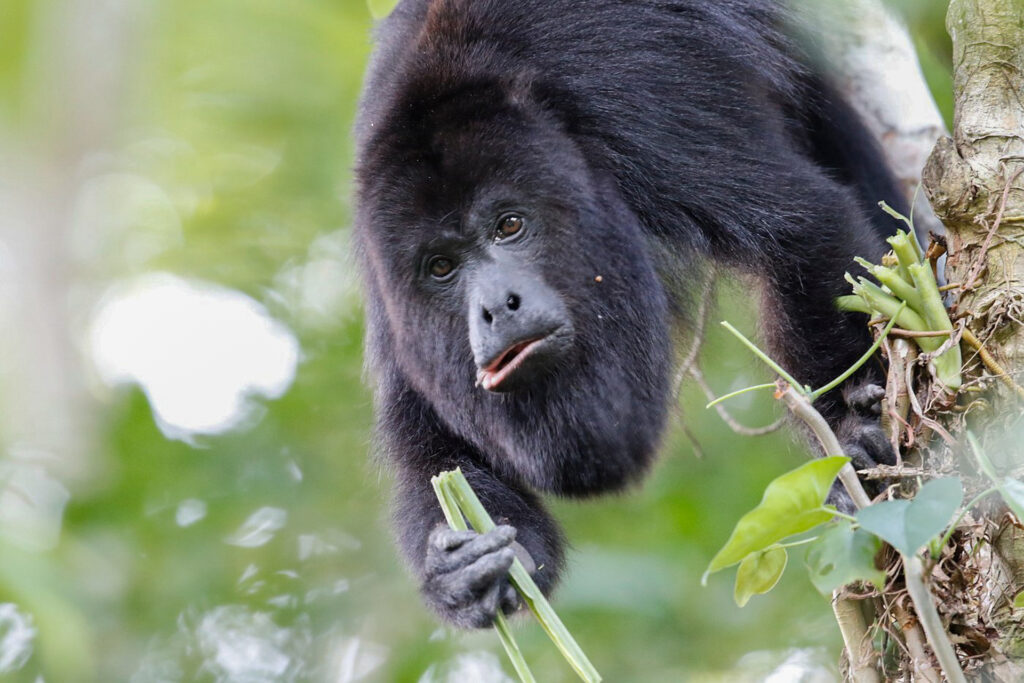
And to further put you at ease, fierce though they may sound, Howler Monkeys are strict vegetarians, feeding on flowers, fruits and leaves that the troops of between 4 and 8 members forage within their own territory, which can range from three to twenty-five acres.
Howler Monkey Specs:
Length: 2 feet, with a 30″ tail
Weight: 15 lbs.
Reaches Maturity: 4 Years, highly social
Mates year round with approx. 180 days gestation
Bears one infant
Habitat: Lowland forests.
Eats: Fruit, leaves, flowers
Lifespan: 20 years
2. Keel-Billed Toucan
(Ramphastossulfuratus)
The Keel Billed Toucan is the national bird of Belize and one of her most recognised animals.

Even though the huge yellow, orange, red, green and black bill looks cumbersome, it is surprisingly dextrous and well adapted for feeding.Primarily fruit eaters, a toucan will nip fruits off at the stem and flip its head back to gulp them down. Toucans also enjoy insects, lizards, snakes and sometimes the eggs of other birds.
The toucan’s call is asdistinctive as its brightly coloured bill and many visitors at first suppose the creaking sound comes from a frog. These are social birds, often seen flying in groups.
Toucans are found throughout Belize’s forests where they nest in holes in tree trunks, laying up to four eggs which the parent take turns incubating.
Toucan Specs:
Size: about 20 inches
Range: Southern Mexico to Northern Columbia
Habitat:Lowland forests and forest borders
Eats:Fruits, insects, reptiles, bird eggs.
3. Baird’s Tapir
(Tapirusbairdii)
In Belize the tapir is known as the “mountain cow” and can be seen foraging along river banks and forest clearings. Feeding on grasses and vegetation growing along river banks as well as leaves, buds, and fruits of the low-growing shrubs, hungry tapirs will also raid corn fields and other crops.
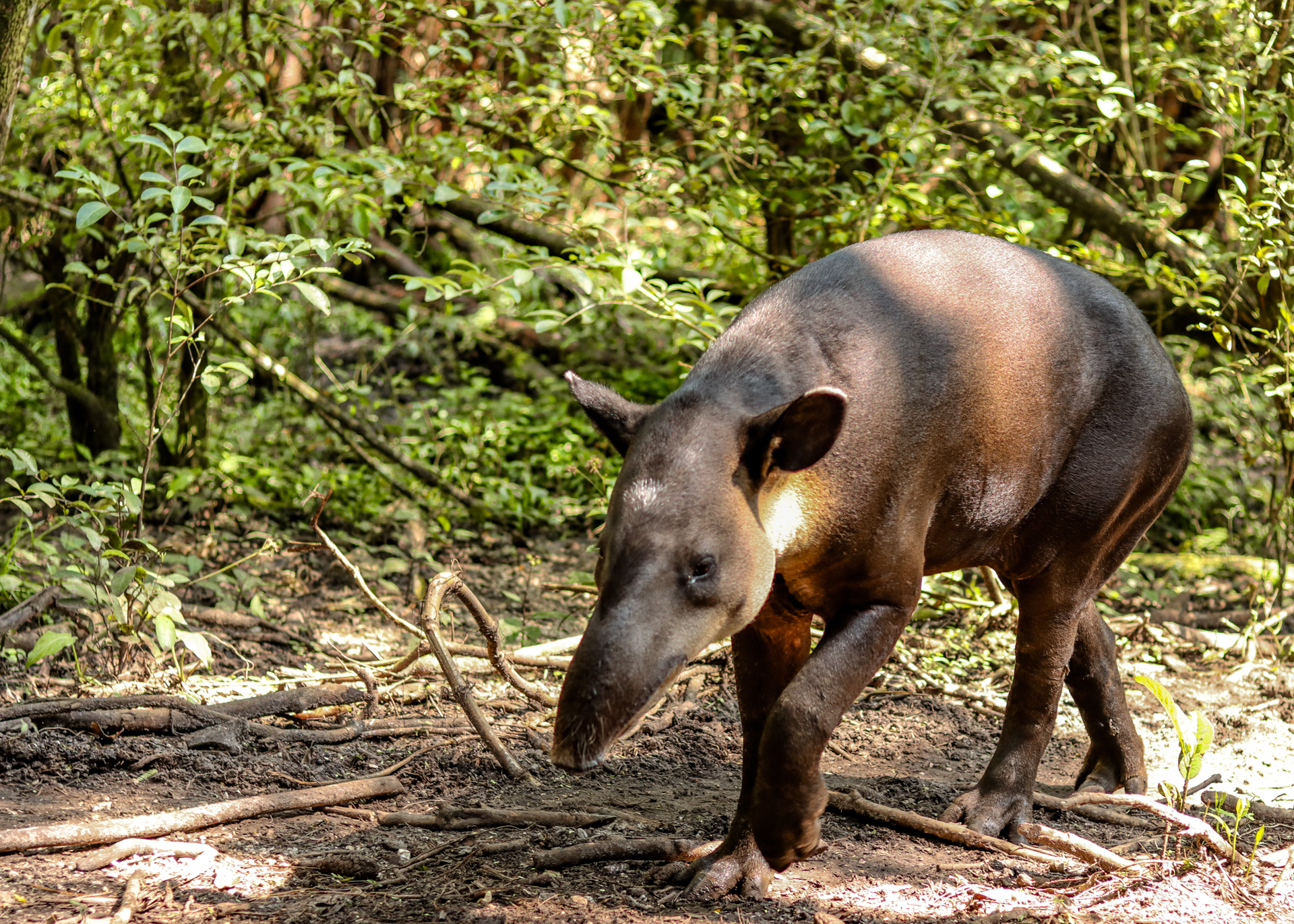
For something so cumbersome looking, the tapir is a very good swimmer and quite agile on steep hillsides and river banks. For the most part solitary, except when with young, they range widely as they forage about for food. People occasionally come across them while bushwalking, and while tapirs generally flee when surprised, they are also known to stamp their feet loudly and whistle.
The Baird’s Tapir ranges from Southern Mexico to Northern Columbia and have been declared endangered due to hunting and loss of habitat.
Tapir Specs:
Length: 6 feet
Weight: 300 – 500 lbs.
Reaches Maturity at 3 Years
Mates year round with 13 months gestation
Bears one baby
Habitat: Riverine forest
Eats: Riparian vegetation
Lifespan: 22 years
4. Ocelot
(Leopardus paradalis)
While chances of seeing these majestic nocturnal catsare slim, we occassionally come across paw prints, scat and other signs that they are around. These are smaller cats when compared to their relatives the mighty Jaguar but they are no less beautiful. Ocelots are known to hunt both day and night looking for smaller mammals, reptiles and birds.
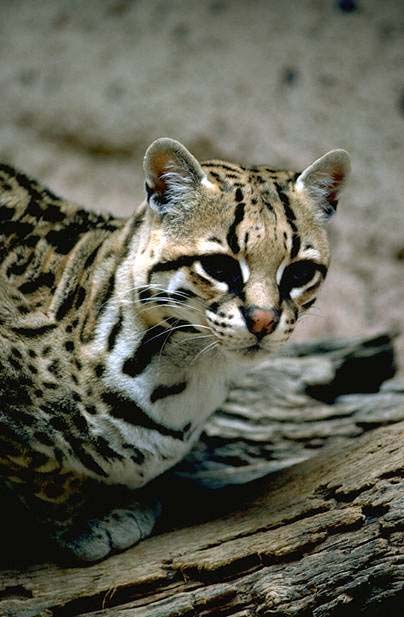
Ocelot Specs:
Length: 29 to 39 inches (males are slightly longer than females) They tails are 10 to 16 inches long.
Weight: 14.5 to 25 pounds (female) 15 to 34 pounds (male)
Reaches Maturity: 1 1/2 years (female) 2 1/2 years (male)
Mates year round with approx. 100 days gestation
Habitat: dense cover that is found in a variety of habitats including thorn scrub, coastal marshes, mangrove and tropical forests.
Eats: small rodents, birds, lizards, baby peccaries, young deer, rabbits, fish and crabs.
Lives generally from eight to 11 years
5. Grey Fox
(Urocyon cinereoargenteus)
Grey foxes are often seen at our property especially in the night. They resemble small dogs with bush tails however, one can distinguish them by their grizzled upper part, buff neck and black-tipped tail.
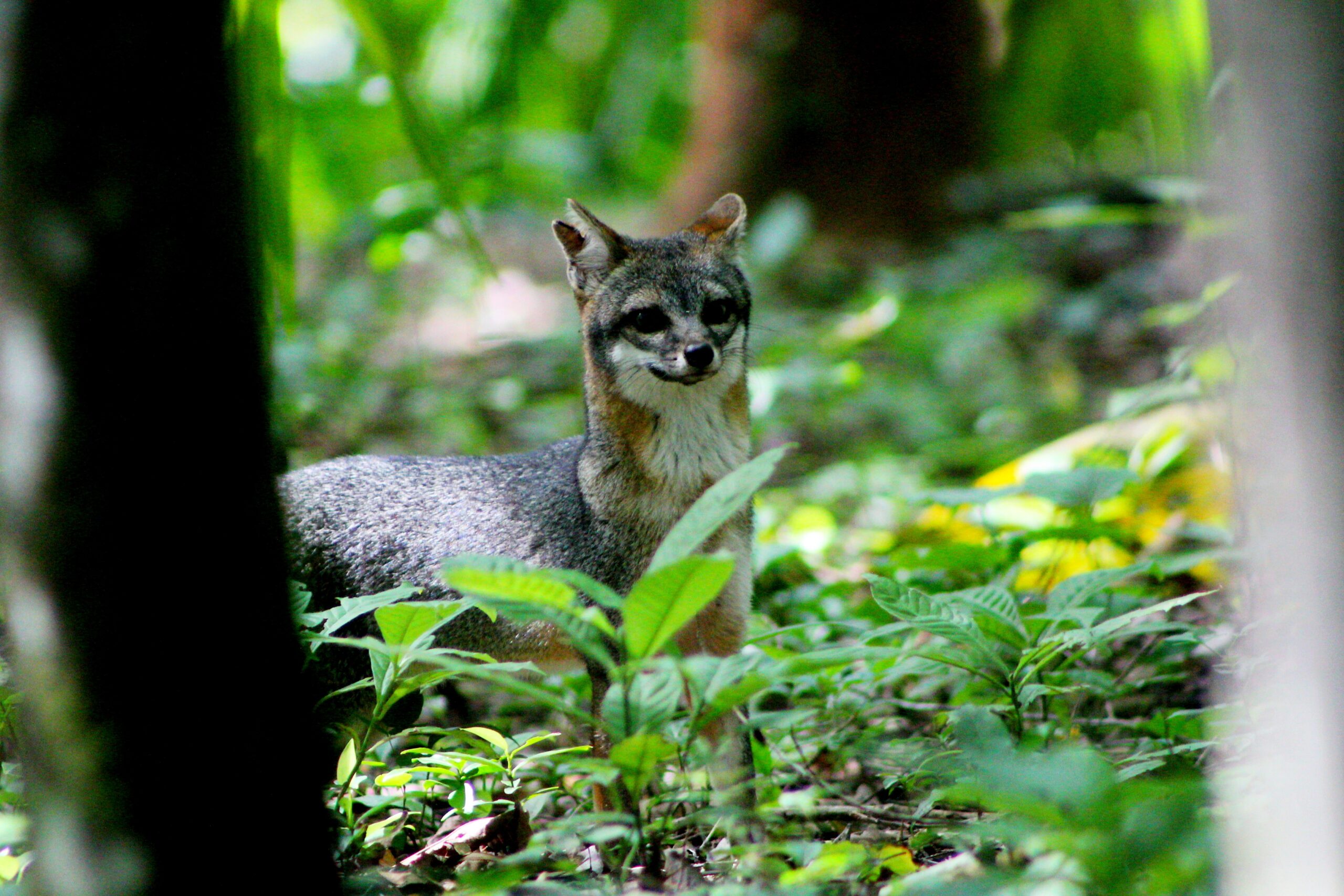
Grey Fox Specs:
Length: 76 to 112.5 cm in total. The tail measures to 27.5 to 44.3 cm
Weight: 3.6 to 7kg
Mate during their first year. Males probably mate with only one female each year and my mate with the same female in consecutive years in late February and early March.
Habitat: Species prefer a healthy mix of forest and agricultural land towards the southern part of their range in Belize.
Eats: Mice, rats and rabbits
6. Boa Constrictor
(Boa constrictor)
Known as the “wowla” in Belize, boa constrictors are the country’s largest snake by far, found throughout the mainland as well as on some cayes. They don’t mind populated areas either, especially where rodents and birds are to be found.
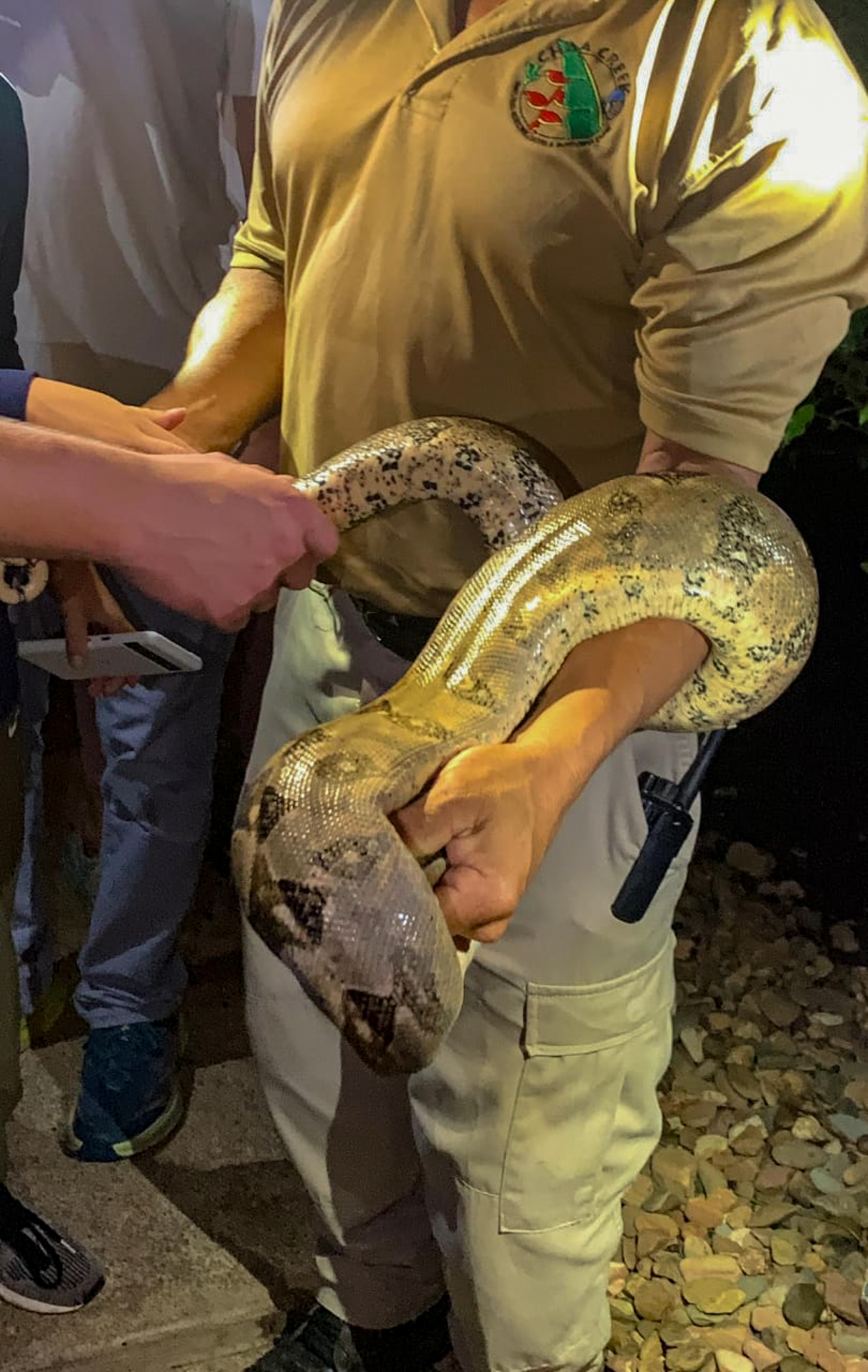
Boas can get up to twelve feet in length and vary in colour from brown to grey with irregular saddles down the entire dorsal body. They have large curved teeth useful for holding prey before constricting them to death.
Boas love birds, rodents and small mammals, and will take lizards and iguanas. When threatened, a boa will hiss and strike. Although they are not poisonous, their bites can be painful, but they are not aggressive and, if left along, will quietly go their own way. A female may give birth to as many as fifty young at one time.
Boa specs:
Length: Up to 12 feet
Habitat:Rainforest, savannah, mangrove swamp, mainland and the offshore Cayes
Eats: Small mammals, birds, reptiles
We do hope that this representation here gives you an idea of the vast diversity of wildlife to be found, and whets your appetite to learn more. Chaa Creek’s Natural History Centre is another great place to start, and our highly trained, licenced professional nature guides are always available to answer questions and guide guests in the right direction.
